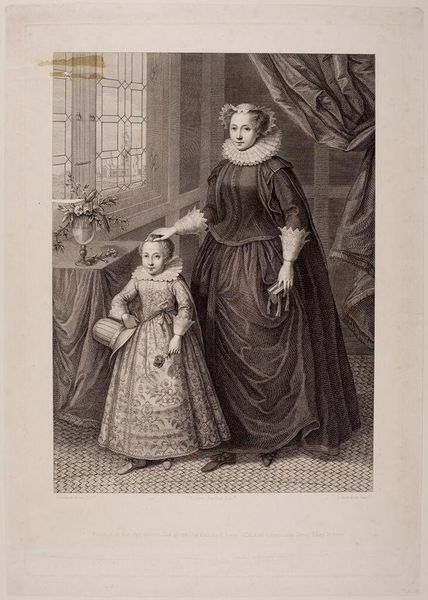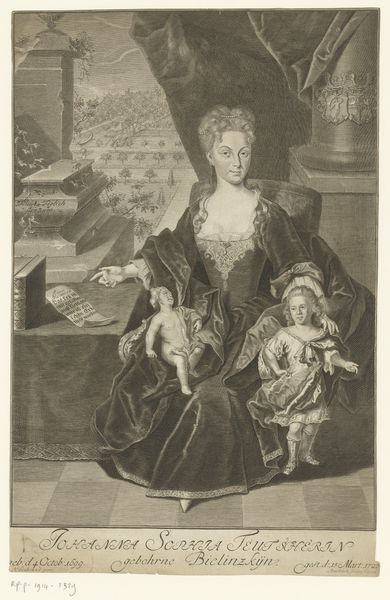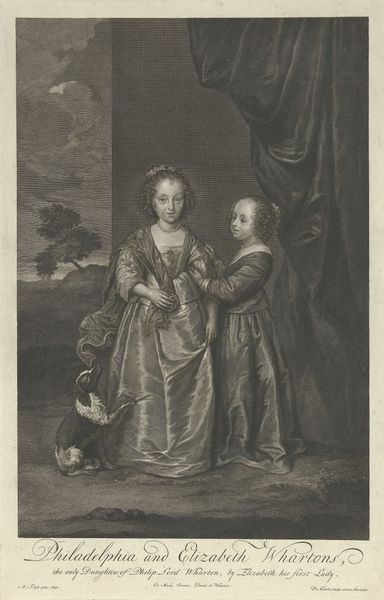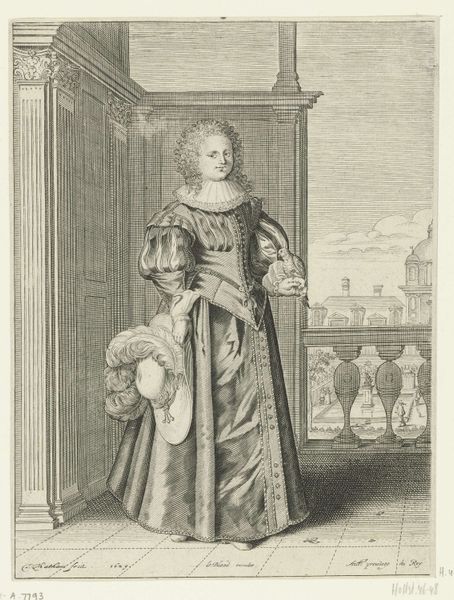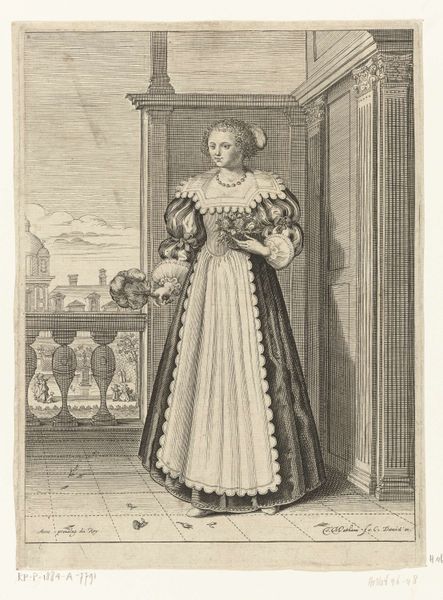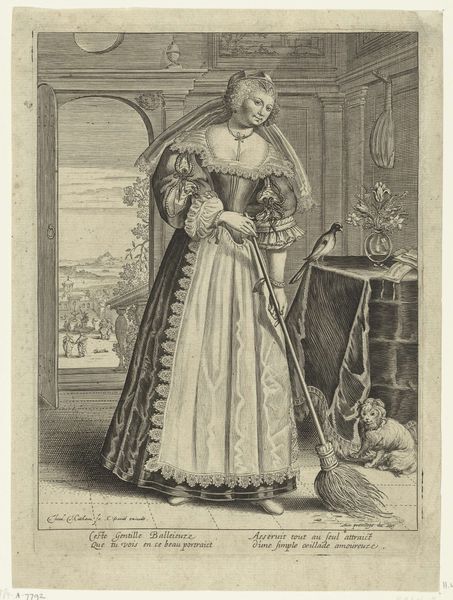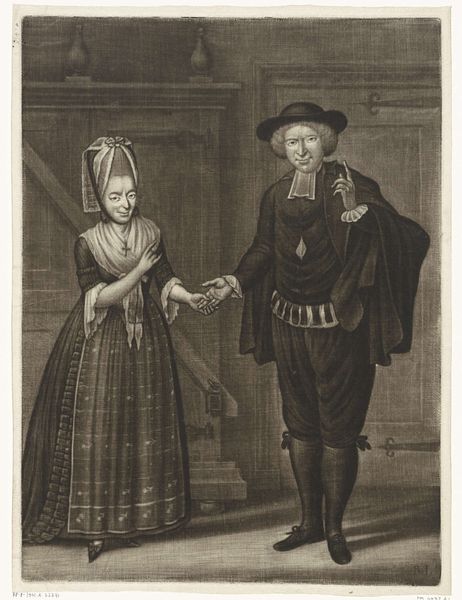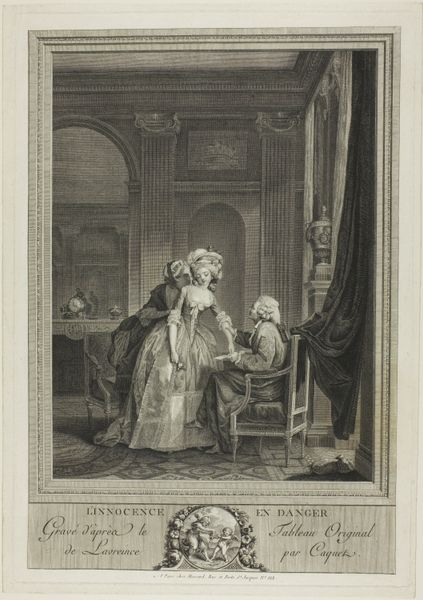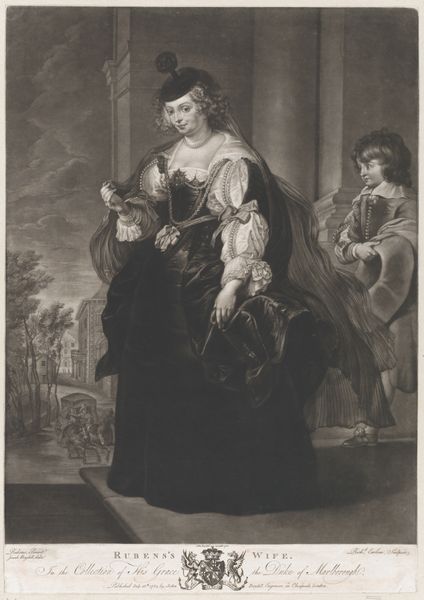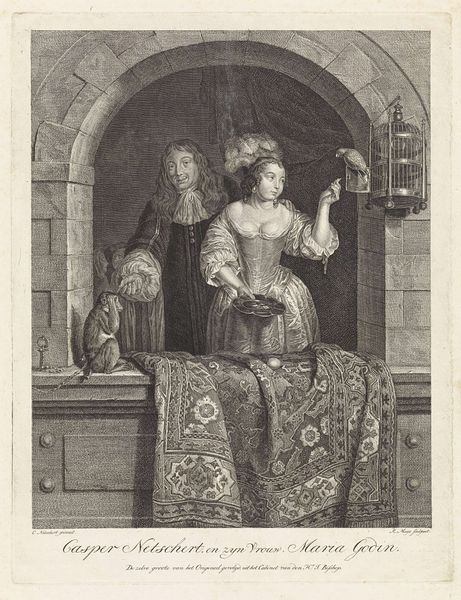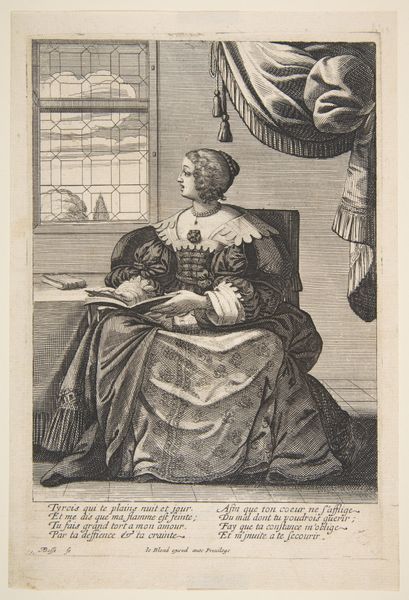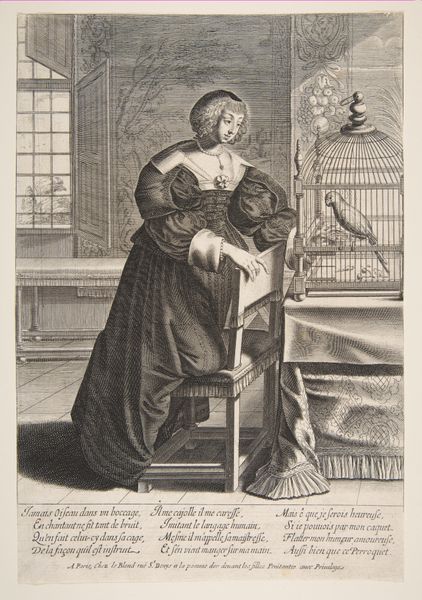
Dimensions: 383 × 288 mm (image); 475 × 328 mm (plate); 486 × 336 mm (sheet)
Copyright: Public Domain
Curator: Let’s explore Francesco Bartolozzi's print, "Mary Queen of Scots," possibly from 1779, currently residing at The Art Institute of Chicago. It’s an engraving on paper, rendered in that distinctive old engraving style. Editor: Immediately, I’m struck by the melancholic stillness. There's an almost tangible weight to the image, like a scene paused mid-breath. The contrast of light and shadow is really intense, which creates a sense of drama. Curator: Absolutely. Bartolozzi was known for his stipple engraving technique, a way of creating tonal effects through dots rather than lines, offering a softness unusual for the time. You can really see it in the fabric of their dresses, look closely at that complex but subtly done floral pattern on the young girl’s dress, it creates a sense of texture and richness. Editor: Yes, you’re right. It reminds me how much craft goes into printmaking— the layering of decisions. What was the material culture of print like then? Curator: The printing was starting to be mechanized and that’s very important as it transformed how images were circulated and consumed, particularly impacting perceptions of historical figures. And remember, this image is probably derived from a pre-existing painting. The choice of materials speaks to a desire to elevate the printing to 'high art', moving away from purely commercial applications. Editor: Right, prints becoming ways to disseminate history…it speaks to the growing interest in celebrity and monarchy during the Enlightenment. Looking at the textures conjures this image of how people had to laboriously carve and press the paper to create a portrait. Curator: Think about it – Bartolozzi and his contemporaries were part of an ecosystem where art served political and cultural purposes. He's giving us not just a portrait, but a carefully constructed idea about power, maybe even vulnerability if you look into Mary’s sad eyes…it certainly lends an evocative feeling, almost a spectral air. Editor: Considering all the effort in choosing paper and then painstakingly recreating this likeness, I understand its enduring appeal now. Thank you for adding new perspectives to the historic image, and opening doors to deeper thought. Curator: It’s such a joy and this art work sparks those kinds of thought experiments about labor, beauty, portraiture and society…all mixed with the sheer fascination and personal perspective.
Comments
No comments
Be the first to comment and join the conversation on the ultimate creative platform.
